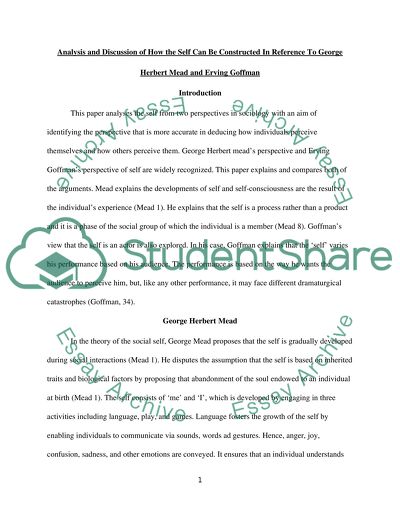Cite this document
(“Analyse and discuss how the 'self' can be constructed in Essay”, n.d.)
Analyse and discuss how the 'self' can be constructed in Essay. Retrieved from https://studentshare.org/sociology/1682116-analyse-and-discuss-how-the-aposselfapos-can-be-constructed-in-sociology-with-reference-to-george-herbert-mead-and-erving-goffman
Analyse and discuss how the 'self' can be constructed in Essay. Retrieved from https://studentshare.org/sociology/1682116-analyse-and-discuss-how-the-aposselfapos-can-be-constructed-in-sociology-with-reference-to-george-herbert-mead-and-erving-goffman
(Analyse and Discuss How the 'self' Can Be Constructed in Essay)
Analyse and Discuss How the 'self' Can Be Constructed in Essay. https://studentshare.org/sociology/1682116-analyse-and-discuss-how-the-aposselfapos-can-be-constructed-in-sociology-with-reference-to-george-herbert-mead-and-erving-goffman.
Analyse and Discuss How the 'self' Can Be Constructed in Essay. https://studentshare.org/sociology/1682116-analyse-and-discuss-how-the-aposselfapos-can-be-constructed-in-sociology-with-reference-to-george-herbert-mead-and-erving-goffman.
“Analyse and Discuss How the 'self' Can Be Constructed in Essay”, n.d. https://studentshare.org/sociology/1682116-analyse-and-discuss-how-the-aposselfapos-can-be-constructed-in-sociology-with-reference-to-george-herbert-mead-and-erving-goffman.


